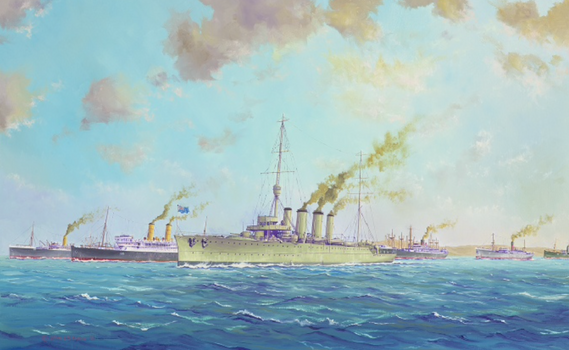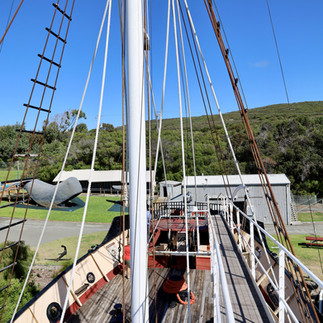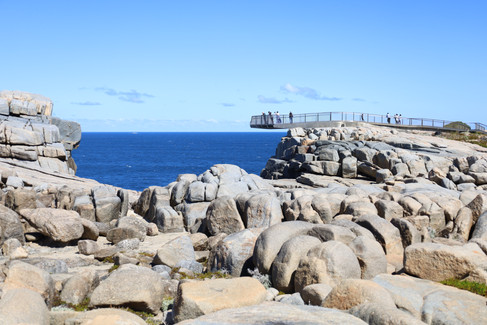ALBANY - WA. exploring its early settlement history, whaling station and natural wonders
- Woolgoolgaoffroad
- Mar 4
- 6 min read
Updated: Mar 4
Nearly 400 years ago, in the year 1627, Dutch explorer Pieter Nuyts embarked on an ambitious voyage that would take him around the southern coast of Western Australia. He was aboard the ship Gulden Zeepaardt, a vessel that was part of the Dutch East India Company's efforts to explore and map the vast and largely uncharted territories of the southern hemisphere. As Nuyts and his crew navigated the treacherous waters of the Great Australian Bight, they encountered a landscape that was stark and desolate, characterized by its rugged cliffs and arid plains. Each passing day, they sailed along the coastline, Nuyts found himself increasingly unimpressed with the barren scenery that unfolded before them.

The lack of lush vegetation and the seemingly inhospitable environment led him to form a rather negative impression of the land, which was in stark contrast to the vibrant and fertile regions that the explorers were accustomed to encountering in other parts of the world. This initial assessment would influence European perceptions of Australia for many years to come, as Nuyts documented his observations in the ship's log, noting the absence of resources that could be deemed valuable or inviting for future colonization efforts. His journey, while significant, ultimately contributed to a narrative that overlooked the rich cultural heritage and ecological diversity of the Indigenous peoples who had thrived on this land for thousands of years prior to European contact.

Over the next 200 years, more explorers sailed the coast, landed and named mountains, bays and rivers. But it wasn’t until 1826 when the brig ‘Amity’ from the British empire landed and set up a colony with troops and convicts. This was to be Albany on the south coast of WA.
Originally called Fredrick’s Town after King George's second son, the settlement was changed to Albany in 1832. The town flourished for a few years with its deepwater port, but in 1829, a settlement was established on the Swan River, 400km to the north ( now known as Perth ). Albany was never going to compete with the new riverside colony.

Albany was still significant being a settlement on the south coast, people like explorer John Eyre wandered into town after leading an expedition across the Great Australian Bight, even Henry Lawson lived in town for a short period in 1890. Both commented that Albany was a pretty yet quiet place, but seemed to be too far away from civilisation. Over the years Albany flourished with a whaling station and as a transit port for miners heading to the goldfields of Coolgardie, pre Kalgoorlie. Roll into 1914, and Albany was the gathering place for our war ships that transported nearly 43,000 troops to Gallipoli and Egypt, for some of these soldiers it would be the last view of Australia they would have.
Today, Albany survives on tourism, agriculture and timber harvesting using the city's deep port for overseas export. Surrounded by National Parks and heritage history, it's not hard to fall in love with Albany, where it's easy to spend several weeks around Western Australia’s oldest European settlement. The placid Shoal Bay harbour with stunning white beaches protects Albany from the squalls from the southern ocean and once outside the harbour, the ruggered rocky coastline is often pounded by the violent Great Southern Ocean.
AROUND ALBANY
Being around for nearly 200 years, there’s so much to see and do around Albany and the best place to start is to explore the main street that's lined with heritage listed buildings all the way down to the bay. In fact, there are 5 heritage walks around town highlighting nearly 30 buildings including the Old Gaol, the oldest dwelling in WA, churches, museums and a replica of the Brig Amity that sailed into Albany in 1826.
The old Whaling Station, 22 km away from Albany, is now a fully functioning interactive museum where visitors can wander around an old whaling station. It’s a fascinating place wandering around the site, through the old buildings and watching the 3-D whale show that takes you through a journey of the whale watchers. It’s a raw place, with the smells, tools, graphic photos and also Cheyenes IV, an old whale boat of just what it used to be like.

Closer to Albany is the National Anzac Centre that incorporates the Princess Royal Fortress built in 1893, against the possibility of invasion. It was manned until 1956, then the complex was turned into a school, then a migrant camp, but by 1970 it fell into disrepair. Twenty years later, work started to restore the many buildings, bunkers and artillery guns on site. Today, along with the nearby Anzac centre, it’s a solemn experience wandering around the array of memorabilia that has been preserved and just wondering, what would it be like if there was an invasion. The Anzac Centre pays tribute to the many men and women who served and indeed left Albany in 1914 and never returned. It’s a moving journey reading the war effort, soldier stories and watching the interpretive content throughout the centre that overlooks King George Sound, where you sort of expect to see ships return loaded with young innocent soldiers.
Offshore between January and March, Killer Whale tours operate on the Southern Ocean and the Bremer Canyon that’s over 3.5km deep. Along with the apex predator, the Orca, the tours often see Sperm, Pilot and Beaked Whales, large sharks and many species of dolphins who all feed and breed in the deep canyons off Bremer Bay near Albany.

If hiking is more of your thing, there’s a multitude of short walks through the National Parks around Albany, but also the 1000km Bibbulmun track where you can walk from Albany to Perth. For the experienced mountain bike riders, the longest off-road cycling track in the world, called the Munda Biddi track, follows the same route.

Torndirrup NP to the south features amazing natural experiences where you can stand on what seems like the edge of the earth on a viewing platform jutting out from the Granite cliffs with the frothing ocean below at the Gap. Nearby, weathering of the granite coastline has left a natural bridge formation where 40-metre cliffs are exposed to some of the wildest seas in Australia.
Wineries north of Albany provide a welcome relief of the blustery southern coast on a bad day and so does exploring Porongurup NP with its stunning hikes and Granite Walkway. With a 5km return walk through Marri and Karri timber forests, the walk heads up to Castle Rock and the lower lookout.

For the more adventurous, take the path over and through huge granite boulders that finally lead you to a vertical 6m ladder up to the top walkway. This amazing feat where the walkway sits high on the granite boulders allows views nearly to Albany across the plains.
It’s a unique National Park that’s taken 1000 million years to grow, where 12 striking granite peaks pop out in the centre of the park surrounded by ancient forests. The Albany region is alive with unique experiences from the coast to the forest, where adventures can experience a host of natural wonders and the history buffs can delve in some of the oldest history in Western Australia.

WHERE
Albany is 420km south east of Perth and is considered to be the oldest settlement in Western Australia. An important port city with views across King George Sound, Albany now thrives on tourism, agriculture and timber products. Having a Mediterranean climate where summers are warm and dry, yet the winters are quite the opposite with rain and cool days. Four days is highly recommended around the Albany area. A National Parks pass is a must if experiencing the surrounding parks.
WHAT TO DO AND SEE
Considering Albany was settled in 1826, there are so many historical and heritage listed buildings throughout the town, notably the main street. There are museums, outdoor activities, back to nature in National Parks, an old whaling station to explore and the Princess Royal Fortress aka the national Anzac centre to gain knowledge and give respect for war men and women.
OTHER INFO
As always, there’s a stack of information available online, but if you're in town check out the Albany info centre in the heart of town, the volunteers are on point with all local information, tours, where to stay and so much more. They can be contacted on 08 6820 3700 or online at www.amazingalbany.com.au.




























































Comments